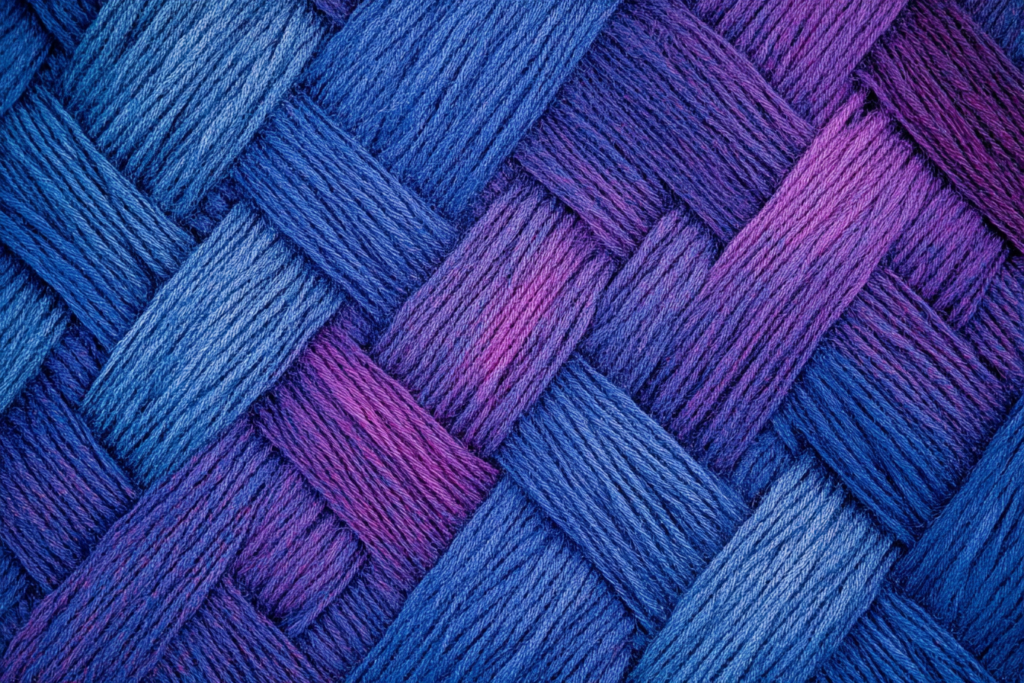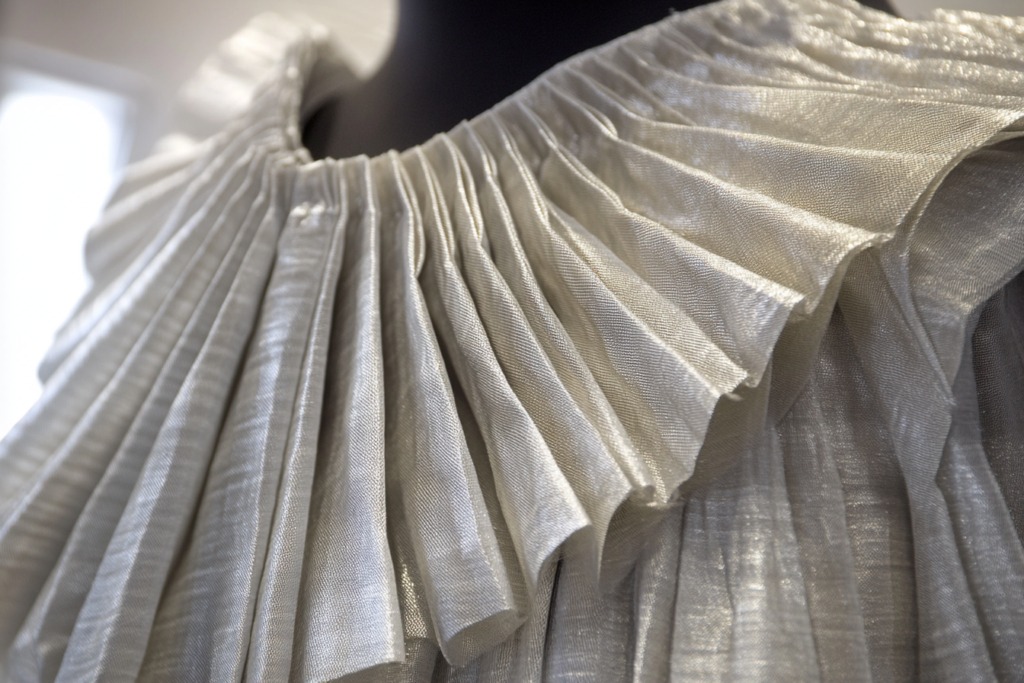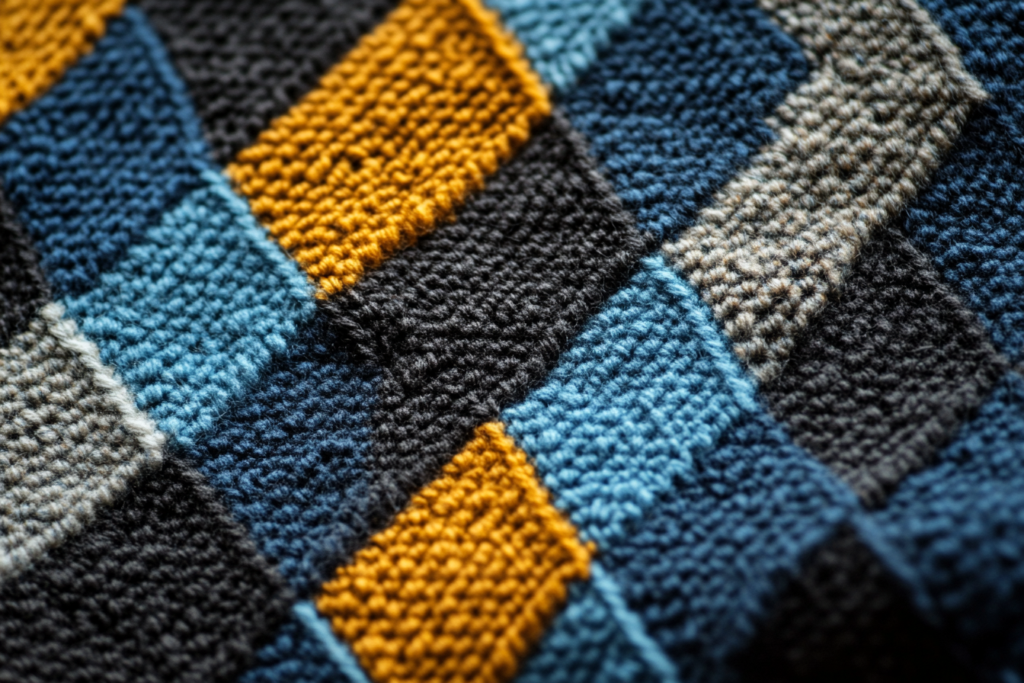Twill Weave: Understanding the Parallel Woven Texture
Meta Description: Twill weave creates a parallel, diagonal texture in fabrics. Learn how the weft yarn passes through warp yarns to form a twill weave and how this technique impacts fabric texture and durability.
What is Twill Weave?
A twill weave is a type of weaving technique that produces a diagonal pattern in the fabric. In this weave, the weft yarns pass under one warp yarn and then over two or more warp yarns, repeating this pattern throughout the fabric. The resulting fabric has a characteristic diagonal texture that is smooth and strong.
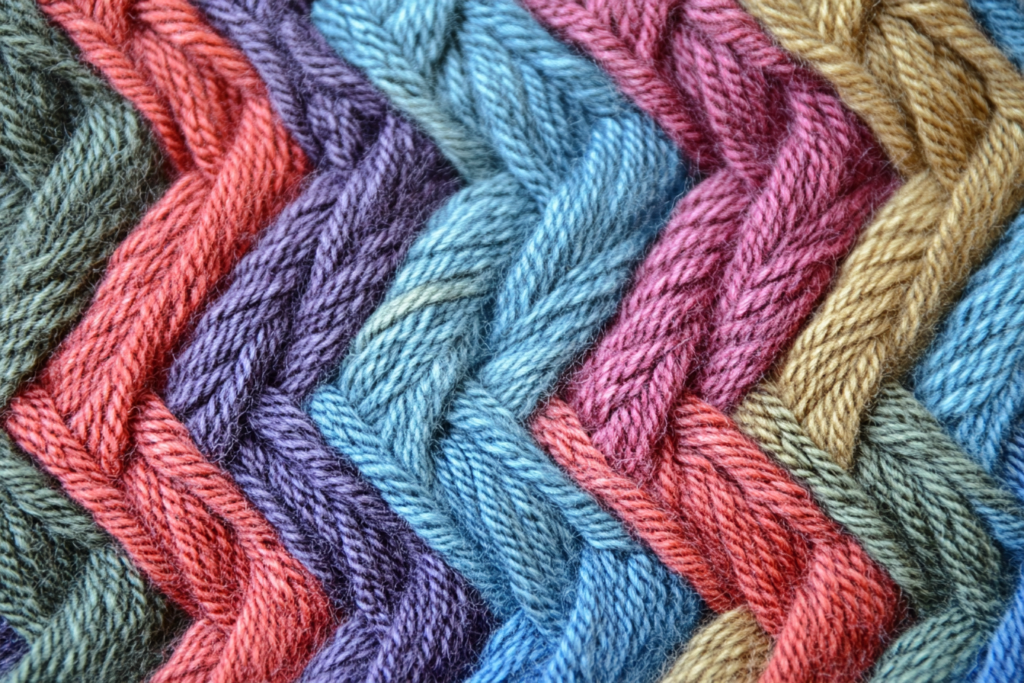
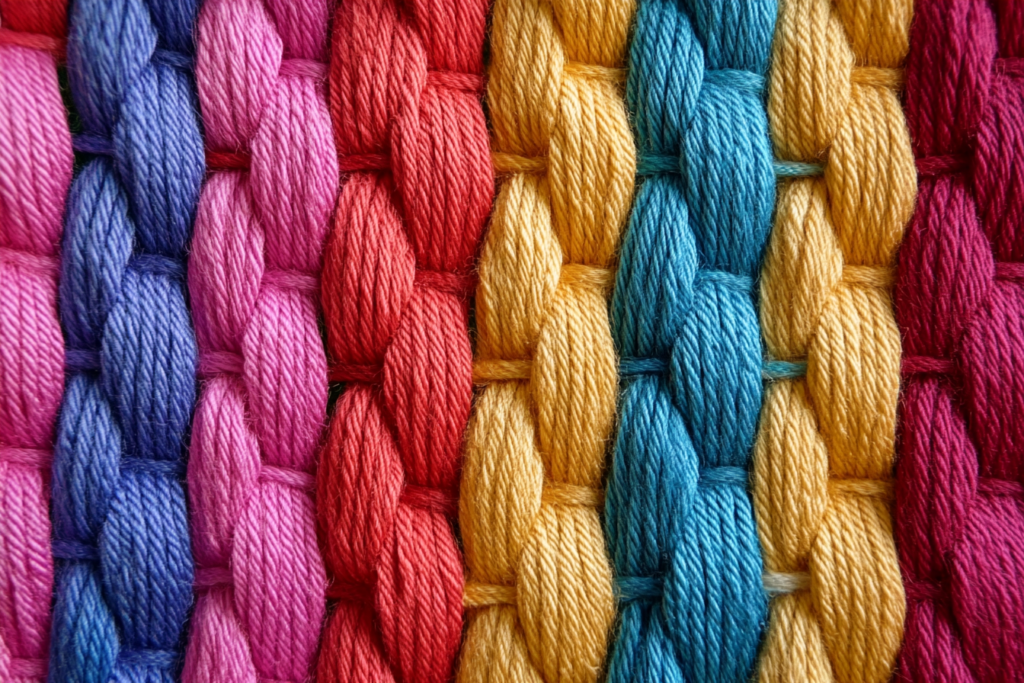
📌 Key Features of Twill Weave:
- Diagonal Pattern: The most notable feature of twill weave is the diagonal lines that run across the fabric, created by the way the weft yarns pass over and under the warp yarns.
- Durability: Twill fabrics are often more durable than plain weaves because the threads are interwoven in a way that provides extra strength and resilience.
- Softness and Flexibility: The fabric tends to be softer and more flexible than other types of woven fabrics, making it comfortable to wear.
How Twill Weave Works
📌 The Process of Twill Weaving
In twill weaving, the process begins with a warp yarn being held under tension on the loom. The weft yarn is then passed over and under the warp yarns in a specific pattern, creating the diagonal texture.
- Weft Yarn Over One Warp Yarn: The weft yarn passes over one warp yarn.
- Weft Yarn Under Two or More Warp Yarns: The weft yarn then passes under two or more warp yarns.
- Repetition: This pattern is repeated across the entire fabric, creating the diagonal lines characteristic of twill weave.
The number of warp yarns the weft passes over before going under two or more warp yarns determines the angle and tightness of the twill pattern.
Types of Twill Weave Patterns
📌 Right-Hand Twill
- In right-hand twill, the diagonal lines run from the lower left to the upper right of the fabric. This is the most common form of twill weave.
- Applications: Denim, khaki pants, suits.
📌 Left-Hand Twill
- In left-hand twill, the diagonal lines run from the lower right to the upper left of the fabric.
- Applications: Commonly used in tweed and hounds-tooth fabrics.
📌 Herringbone Twill
- Herringbone twill creates a V-shaped pattern by reversing the direction of the diagonal lines at regular intervals.
- Applications: Suits, jackets, and outerwear.
Advantages of Twill Weave
📌 Durability
- Twill weave fabrics are known for their strength and resilience. The interlacing of the threads creates a dense, sturdy fabric that can withstand wear and tear. This makes it ideal for workwear, jackets, and denim.
📌 Softness
- Unlike other woven fabrics, twill weave has a softer feel. The pattern allows for more flexibility, making it comfortable to wear for long periods.
📌 Wrinkle Resistance
- Twill fabrics are naturally more resistant to wrinkles than fabrics made with plain weave due to the diagonal texture, which helps the fabric maintain its structure.
📌 Aesthetic Appeal
- The diagonal lines of twill weave give the fabric a unique and attractive texture, making it a popular choice in both casual and formal wear.
Applications of Twill Weave
📌 Denim
- Denim, the fabric most commonly associated with twill weave, is made using a right-hand twill pattern. This fabric is durable, flexible, and ideal for jeans, jackets, and workwear.
📌 Suits and Trousers
- Twill fabrics are commonly used in making suits, trousers, and jackets. The fabric’s strength and aesthetic appeal make it a go-to for professional attire.
📌 Home Textiles
- Twill weave is used in home textiles, such as upholstery, curtains, and pillows, due to its durability and rich texture.
Illustration of Twill Weave Process
Here is an illustration that demonstrates the process of twill weaving, showing how the weft yarn passes over and under warp yarns to form the diagonal texture characteristic of twill weave.

Conclusion: The Versatility of Twill Weave
Twill weave is a versatile and durable weaving technique that creates fabrics with a unique diagonal pattern. From denim to suits and home textiles, twill weave is used in a variety of applications due to its strength, softness, and aesthetic appeal. Whether you’re designing casual denim jeans or sophisticated suits, twill fabric is a reliable and stylish choice for a wide range of garments.
